It’s the moment you’ve been waiting for… sensory supports are finally here! This week only, get 20% off all sensory items with promo code SENSE20.
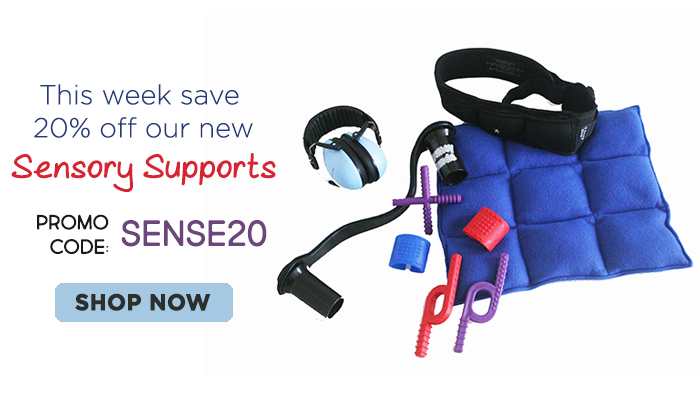
It’s the moment you’ve been waiting for… sensory supports are finally here! This week only, get 20% off all sensory items with promo code SENSE20.

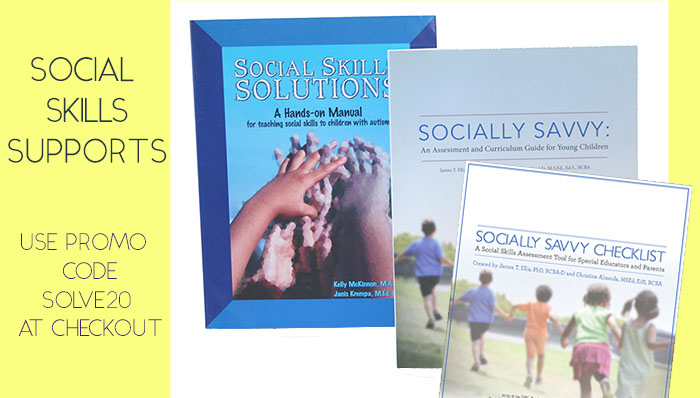
This week, take 20% off select social skills supports with promo code SOLVE20 at checkout!

In honor of National Handwriting Day, this week’s Pick of the Week are two handwriting tools. Use promo code WRITE20 at checkout for 20% off! Check out the sale here!
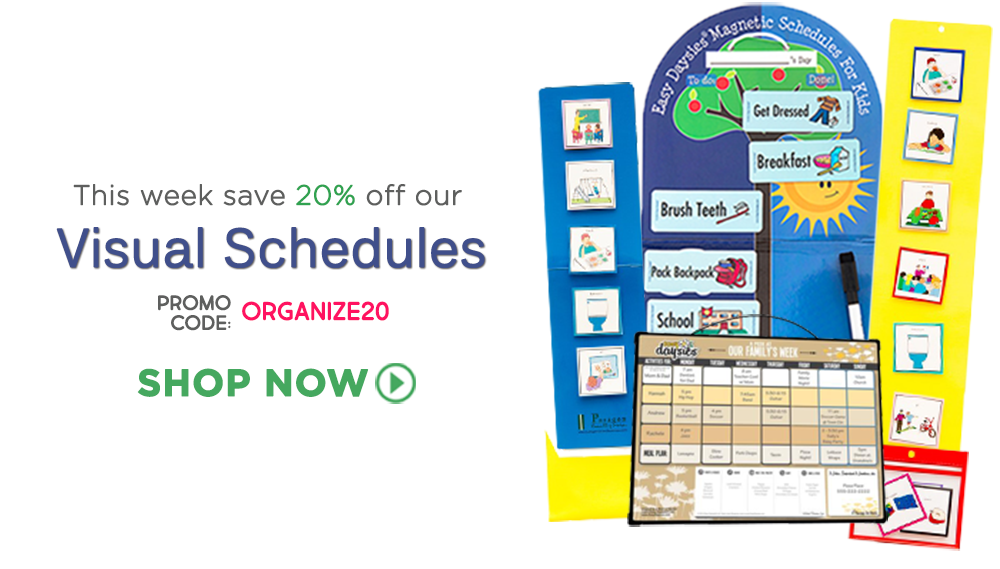
Happy 2017, Different Roads family!
Just because the holidays are over doesn’t mean there aren’t any good sales left. Save 20% on your purchase of select organizers this week only by using promo code organize20 at checkout!
Get organized NOW!
Find a better way to manage your time and check more things off your to-do list this school year! Created with ABA principles by Dan Sundberg, PhD, the Self Management Planner is perfect for those who have busy and frequently changing schedules and want something that will do more than schedule time in the day. This week, you can save 20% on the Self Management Planners and get a head start on organizing your schedule for the school year! (Use promo code PLANNER20 at check-out!)

Not only is this planner perfect for effective time management and organizing your activities, but it also allows to set and track your goals (it even includes graph paper so you can watch your progress!).
The Self Management Planner includes:
Available in two sizes: Full (11.5″ x 8.5″) and Compact (8.5″ x 5.5″).
 The holiday season is approaching! What better way to celebrate than to take 20% off our collection of toys and games?
The holiday season is approaching! What better way to celebrate than to take 20% off our collection of toys and games?
This week only, use promo code “holiday20” at checkout!
Check out our last sale in November before Black Friday! This week only, take 20% off select social skills games with promo code SOCGAME20.

Many kids, especially those with ADHD, autism or Asperger’s, have trouble comprehending the socially accepted physical boundaries that many take for granted. These games pictured above will help enhance social skills and make your child more comfortable in social settings.
School learning communities are dynamic and complex, and meeting the challenge requires a detailed understanding of how such communities work, a task that is ideally suited to Ecological Assessment. Ecological Assessment for successful school inclusion settings can be a vital part of the structure of maintaining scientifically-grounded, evidence-based practices in schools. Like functional assessment, Ecological Assessment uses the tools of Applied Behavior Analysis – behavioral definitions, direct observation and data collection, task analysis, simple statistical analysis, structured interviews – and applies them to the ecosystem of the classroom and other settings in schools.
In 2007, Cooper, Heron, & Heward wrote: “An ecological approach to assessment recognizes the complex interrelationships between environment and behavior. In an ecological assessment a great deal of information is gathered about the person and the various environments in which that person lives and works. Among the many factors that can affect a person’s behavior are physiological conditions, physical aspects of the environment (e.g., lighting, seating arrangements, noise level), interactions with others, home environment, and past reinforcement history. Each of these factors represents a potential area for assessment.” (p. 55)
Ecological Assessment has been discussed in behavior analysis for at least the past 45 years. Wallace and Larson (1978) described Ecological Assessment as referring to the analysis of an individual’s learning environment and his/her interactions within and across these settings. In stressing the importance of ecological assessment, Hardin (1978) said that “appropriate and effective intervention cannot occur without an adequate understanding of the child and his or her environment.” Heron and Heward (1988) pointed out that sometimes students’ situations warrant comprehensive study, saying, “…some students’ learning/behavior difficulties are subtle and complex and, thus, necessitate a more global assessment to ensure the most appropriate instructional approach.” They suggested that Ecological Assessment should be based on various sources of information such as student records, interviews, formal and informal tests, and direct observation, and include an examination of specific influences within a setting such as:
According to Carroll (1974) a model of Ecological Assessment consists of six steps:
Like functional assessment, Ecological Assessment is part of an analysis involving students and the environment. While functional assessment identifies specific behaviors (usually problem behaviors) exhibited by a student as the target of the assessment, Ecological Assessments have both a setting focus and a student focus. Ecological Assessments study the nature of all behaviors required to be reinforced in a particular setting and the specific circumstances under which those behaviors must occur. It then compares these requirements to the abilities and experiences of the student. The central question in an Ecological Assessment is, “What does the student need to do to succeed?”
Why Conduct an Ecological Assessment?
There are many reasons to conduct an Ecological Assessment:
The Future of Ecological Assessment
Educational teams in schools tackle problems encountered in inclusion settings every day, both from the assessment side and the student preparation side. While Ecological Assessment has been frequently discussed as a valuable tool and would seem to be ideal for gaining a detailed understanding of environmental barriers and challenges in classrooms and other inclusion settings, there is little established structure to guide clinical implementation.
At this point, one Ecological Assessment is very likely to look completely different from another. Like functional assessment, Ecological Assessment in the future must take on recognized and validated structure that is data-based, reliable, and highly descriptive of setting characteristics and related student abilities. Insights into how to provide meaningful student inclusion experiences depend on well-developed tools that synthesize and easily communicate information about complex challenges.
Well-structured Ecological Assessments will provide a vital means of approaching inclusion that, in addition to providing a detailed analysis, will create a structure that can extend well beyond the initial decision-making phase of programming, and, without a doubt, promises to contribute enormously to student program development.
For more on Ecological Assessment, check out our newest product by Fovel, the SEAT!
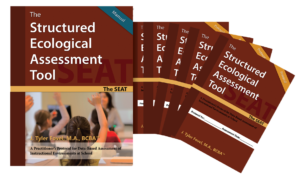
This innovative new protocol and manual provides essential structure to facilitate ecological assessment of inclusion settings that is systematic with ABA principles and straightforward to implement. This assessment tool is a must for practitioners and educational teams at all levels and grades, who need to design, and evaluate student inclusion experiences using evidence-based methodologies.
This week only, get the SEAT for 15% off with promo code SEATNEW.
WRITTEN BY J. TYLER FOVEL, M.A., BCBA
Tyler Fovel has worked in the field of Applied Behavior Analysis for over 40 years, with all ages of students and with dozens of educational teams. He has published manuals on educating students with autism and related developmental disabilities: The ABA Program Companion and The New ABA Program Companion (DRL Books). He lives in Massachusetts with his wife, Jan, and their golden retriever, Lucy.
Happy November, Different Roads family!

We’re incredibly excited to announce our newest product, the Structured Ecological Assessment tool (SEAT) by J. Tyler Fovel, M.A., BCBA.
The SEAT is a structured protocol and manual that guides you through the process of conducting an Ecological Assesment. It provides forms, data-sheets, graphic display grids, and even report samples to take you from referral through data compilation and effective reporting.
This innovative new protocol and manual for school inclusion settings from the author of The New ABA Program Companion provides essential structure to facilitate ecological assessment of inclusion settings that is systematic with ABA principles and straightforward to implement.
WHY USE THE SEAT?
* Teams use the SEAT with students making transitions between programs, supplementing the typical discussions between sending and receiving teams for a smoother transition
* For students who are less-than-engaged in class and exhibit off-task behavior, the SEAT assessment helps teachers identify and eliminate barriers to on-task behavior and, as efforts are made to resolve issues, provides both a baseline and a convenient on-going monitoring vehicle for both the student’s behavior and any continued existence of the barriers
* When evaluating student readiness, the SEAT identifies the key skills actually reinforced in target environments, so that specific, concrete, realistic preparations can be implemented
Save 15% on your purchase of this exclusive class set of one protocol and five manuals this week only by using promo code SEATNEW at checkout!
Happy last Tuesday of October! This week only, save 20% on your purchase of select executive functioning tools by using promo code EXECFUN20 at checkout!
These products are great for problem solving and ideal for individual and classroom settings.

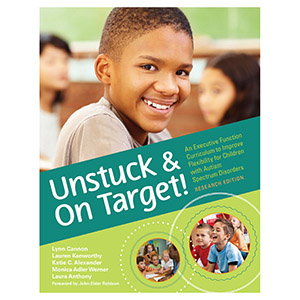 Pictured are two of our featured curriculum books, Unstuck & On Target! and Solving Executive Function Challenges.
Pictured are two of our featured curriculum books, Unstuck & On Target! and Solving Executive Function Challenges.
Unstuck & On Target gives clear instructions, materials lists, modifications for each lesson, and intervention tips to reinforce lessons throughout the school day for students with cognitive ability and language skills 8-11. Helps educators and service providers teach these executive function skills to high-functioning students with autism.
Solving Executive Function Challenges is a practical resource for parents, teachers, and therapists helps high-functioning students with autism improve on these critical skills. With this guide, teachers and caretakers learn strategies to teach EF skills, including setting and achieving goals and being flexible, as well as ideas for accommodations and actions to address common problems, such as keeping positive, avoiding overload, and coping.